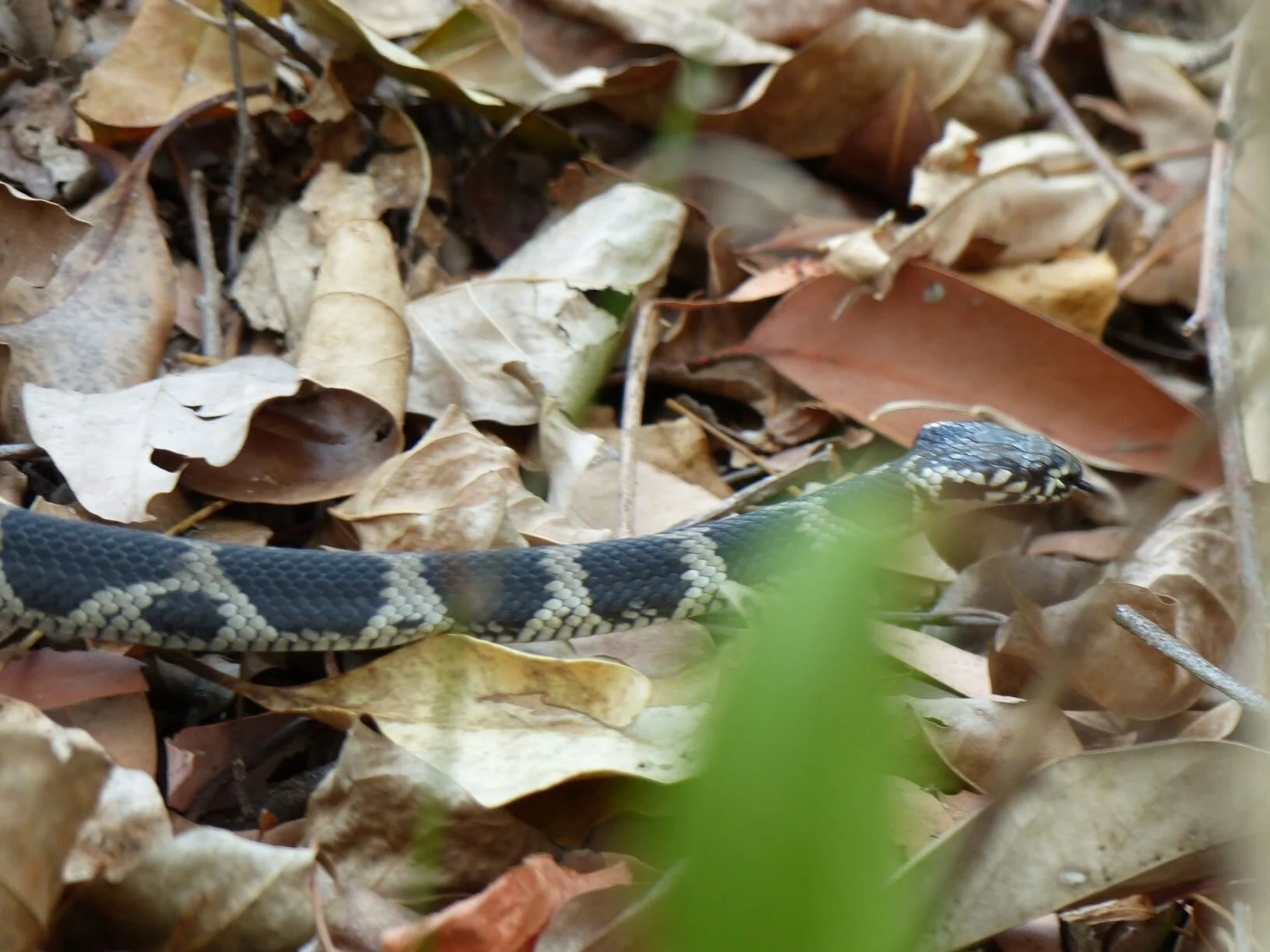stephens’ banded Snake (hoplocephalus stephensil)
Toxicity: Highly venomous. Although there have been no recorded deaths, these snakes are capable of inflicting serious envenoming.
Description: The Stephens’ Banded Snake is the largest of the broad-headed snakes, reaching 1.2 metres in length. It has a very distinctive broad triangular (or arrow shaped) head. The head and body colour vary from off-white through to brown and grey, with body patterns that vary from broad dark bands through to dark blotches. The underside is a cream colour with a strong lateral keel on each side that aids climbing.
The Stephens’ Banded Snake is a member of the front fanged venomous Elapid family.
The Conservation Status of the Stephens’ Banded Snake is listed as vulnerable by the NSW Office of Environment & Heritage.
General habits: The Stephens’ Banded Snake is a strong climber, generally found in forested areas east of the Dividing Range from Sydney through to around Hervey Bay. It is mostly nocturnal and spends its time in large hollow trees. When threatened, the Stephens’ Banded Snake forms a defensive S shape and is quick to strike.
Diet: Lizards, small mammals.
Locally: Rarely encountered. Photos are from snakes caught at Mt Warning, Upper Crystal Creek and Blue Knob.
Reproduction: Stephens’ Banded Snakes are viviparous (bearing live young) with an average of 6 young born around February-March. Females breed every two years or less.
Note the broad arrow shaped head.
Check the identification of your snake before picking up. The body is not too dissimilar to a small Coastal Carpet Python.




